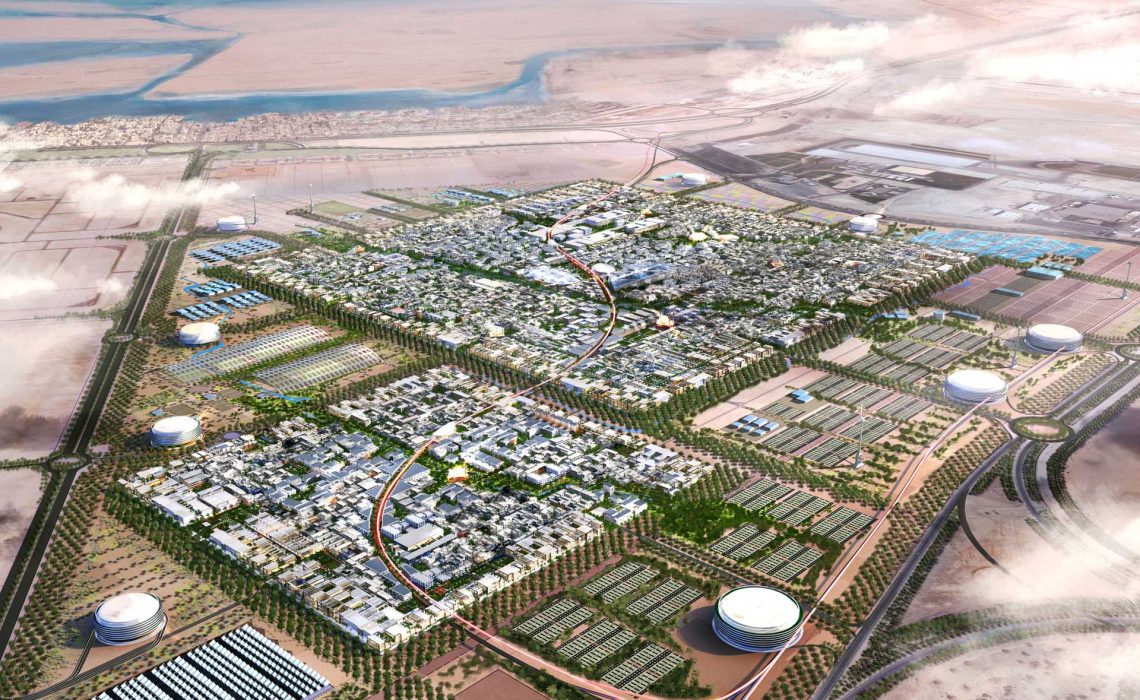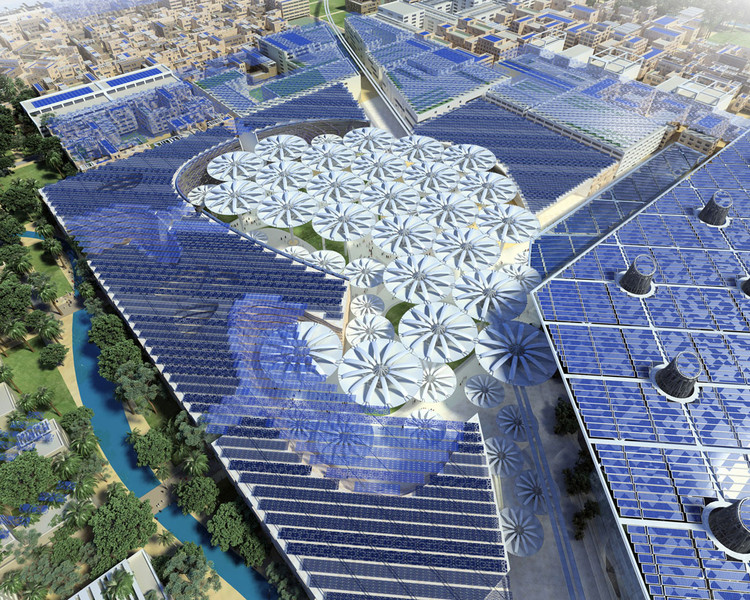
Masdar City is the world’s first zero-carbon city project under development in Abu Dhabi, United Arab Emirates. The city will rely entirely on solar energy and other renewable sources for its electricity. It is expected to be completed by 2025. With the growing demand for new technology, comfort, and luxury, pollution has become an unwanted guest along with other technological advances. It is almost impossible to think of a place free from pollution in today’s world. Masdar City has enough determination and courage to stop this unwanted guest.
General Introduction: Masdar City
Masdar City is a planned zero-carbon city project in Abu Dhabi, United Arab Emirates. It was built by Masdar, under the Mubadala Development Company. The city was designed by British architecture firm Foster and Partners. The project started in 2006, with the goal of completing the first phase in 2009. But was delayed until 2015 due to the global financial crisis. The city is planned with a proposed budget of approximately US $20 million. It is designed to accommodate about 50,000 people and 1,500 commercial centres within a 6 km² area. The city is located near the urban area of Abu Dhabi.
The architects designed the city keeping in mind the comfort and ease of the pedestrians and cyclists. The city navigation system, in a word, can be understood as the process of the flow of people in a city, developed by End Point and City ID. The Masdar developers have done a great engineering job, keeping the city cool even in the desert area. They built a 148-foot-tall wind tower that draws cool air from above and discharges it to the street. Thus keeping the temperature around 15-20°C even in the hot desert of Abu Dhabi. The city is made slightly above the ground to keep the temperature low. In addition, the buildings are very close to each other, which reduces the amount of sunlight entering the street. Masdar City has terracotta walls around it. This helps to isolate the city from the hot winds and sand of the surrounding desert.
Commuting Around the City:

Major travel in Masdar City will be facilitated by public rapid transit (PRT) systems, as there was no room for private vehicles in the original design. However, due to the high cost of deploying underground PRTs, the revised plan has increased the demand for private vehicles. Public transport in the city will be powered by clean energy and electric vehicles, keeping in mind the zero-carbon motto of the City of Masdar.
Churches, Temples And Mosques In Masdar City
Mosque Masdar is built within the neighbourhood to meet the religious needs of the residents. There are several options for church-goers in Mussafah, which is about a 15 to 20-minute drive away. Those of the Sikh faith are welcome to visit the New Gurdwara Abu Dhabi. Hindus in Abu Dhabi will have to wait for the new temple to be built. Until then, the only option is to travel 1 hour and 30 minutes to the temple in Dubai’s Bur Dubai district.
Schools And Universities In Masdar City
Ryan International School, founded by the Ryan Group of Institutions, is located within Masdar City Abu Dhabi. The school follows the International Baccalaureate (IB) curriculum. They have a cutting-edge infrastructure, modern classrooms, a swimming pool, an auditorium, and activity rooms. Residents can also choose schools and nurseries in neighbouring Khalifa City, which has some highly rated options.
Hospitals And Clinics In Masdar City
Mediclinic Khalifa City and Provita International Medical Centre are located in neighbouring Khalifa City, about an 8 to 10-minute drive away. The NMC Royal Hospital in Khalifa City is the closest hospital.
Powering Masdar City:
Masdar City is completely dependent on solar energy and other renewable energy sources for its energy needs. It has 54 acres of land with 87,777 solar panels currently installed in addition to rooftop solar panels installed around the city. Another amazing thing is that the city won’t have any electrical switches or water taps, the motion sensors will be there to do the work for you, saving around 50% power and resources as assumed by the city planners.
Lead architect, Gerard Evenden, said: “When we started this project, no one really thought about doing projects of this scale. Then you realize that it is much more efficient to build your solar field on the ground in the middle of the desert. You can send a man to brush them off every day, instead of having to visit every single person’s building, and you can make sure they’re operating at their absolute peak. It’s better than putting it on every building in town.

In addition to the energy-saving plans, Masdar will commit to recycling and reusing about 80 per cent of the water used in the city, “as many times as possible.”
Honour and Reception:
The City of Masdar’s commitment to zero carbon and zero waste has resulted in tremendous support from various global organizations such as WWF, and BioRegional. They promoted the city as an official “One Planet Living Community”.
The City of Masdar received the 2012 EE Vision Award from the Energy Efficiency Alliance. The US government has also provided support to the City of Masdar.
Following in the footsteps of Masdar City, the Saudi authorities have planned a unique design for a new city with 100% sustainability: The Neom City by NEOM. The company was founded by His Royal Highness Crown Prince Mohammed bin Salman and will be looking after the project. The project hopes to draw visitors from major international destinations in Asia, Europe, and Africa.
Final Words
The city of Masdar is a major attempt to uplift our earth from the deep wells of pollution and other harmful chemicals that we created to satisfy our endless craving for luxury and comfort. Projects like these will prove very helpful in freeing human life from the unproven effects of pollution, which can lead to the extinction of human life.





